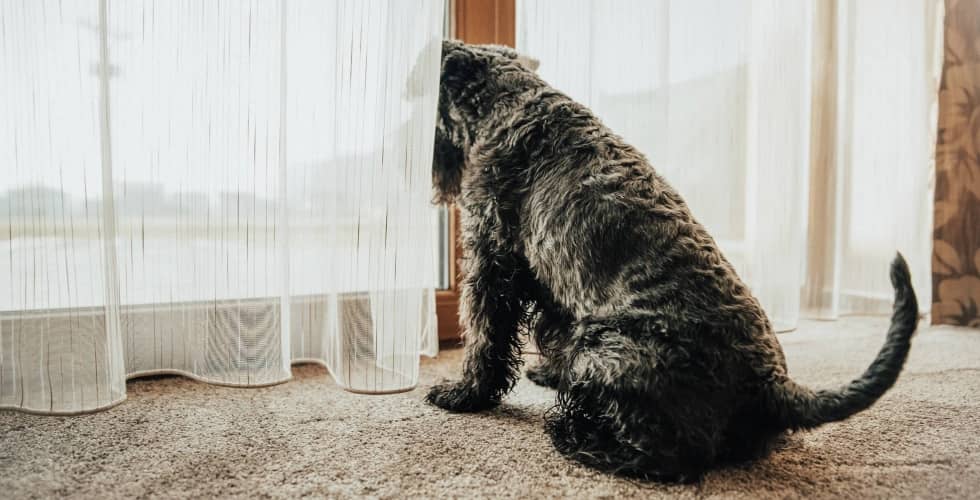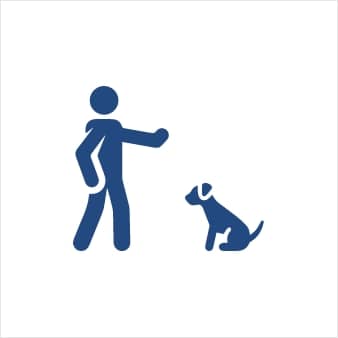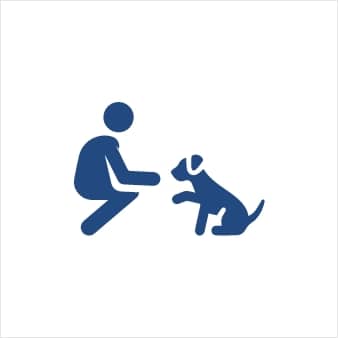
What is Separation Anxiety in Dogs
Separation anxiety is quite a common behavioral issue for many dogs although it’s most common in young pups. When a puppy is away from his or her owner, they endure intense degrees of withdrawal and deprive themselves of even the most basic luxuries, such as food and water. The indicators of dog separation anxiety will be covered in this article along with recommended treatments so that owners can learn how to spot and deal with these challenging circumstances. We’ll also include a list of the most common questions relating to separation anxiety in the form of an FAQ at the end.
Known Causes
It can be difficult to witness separation anxiety in a cherished pet, especially in dogs. When separated from their human companions, our furry pals suffer from this ailment, which causes them to feel upset and anxious. The different reasons why dogs experience separation anxiety will be looked at in this article. To better understand how this syndrome manifests and how to manage and cure it, we will examine genetics and environmental variables. We’ll talk in particular about how heredity and environment affect separation anxiety among other reasons.
Genetics
Dog separation anxiety is mostly influenced by genetic predisposition. It’s believed that some breeds may be more prone to the illness than others. Shiba Inu, German Shepherd, and Havanese breeds are among those thought to be more prone. Golden retrievers, Bichons Frises, and Dachshunds are some more breeds that may have an increased chance of having the illness. Also, dogs from shelters or those who have already been given up are more prone to have separation anxiety. Although while the disease can still be caused by environmental circumstances such a traumatic event or the owner’s departure, genetics is likely to make things worse.
Environment
The environment in which dogs reside can contribute to their separation anxiety. For instance, dogs who are constantly relocated from one home to another or kept in crates may get anxious due to unpredictability. Additionally, puppies who are abruptly separated from their moms or siblings may exhibit anxiety as a result of the trauma. When confronted with risky or unknown circumstances, such as thunderstorms or interactions with other animals, dogs can experience fear. Dogs may also worry when their owners are away if they have careless owners who are rarely home or pay their pets little to no attention. Finally, traumatic experiences and loud noises can both negatively affect a dog’s mental health. For dogs to grow up and develop correctly, they need situations that are safe and stable. Owners may enhance their pet’s general well-being and lessen separation anxiety by providing a loving and safe home.
Health
A dog’s physical condition has a significant impact on how prone it is to separation anxiety. Due to the link between a compromised immune system and an increase in anxiety symptoms, dogs who have physical health problems like obesity, diseases, chronic allergies, and digestive problems are more likely to experience anxiety. Dogs who are overweight are frequently less active and deal with the stress of being out of shape, which has a direct impact on their moods. Because they can be uncomfortable and frequently require actions to better regulate the body, allergies and digestive problems can also cause symptoms similar to stress. It has been demonstrated that an animal in good physical condition has more stamina to combat worry and also exhibits better emotional regulation. Owners may safeguard their dog’s physical health by feeding them properly and exercising them frequently, which lowers the likelihood that their pup will develop separation anxiety.
Age
Because certain puppies may be more likely than adults to experience the disease, separation anxiety in dogs is frequently related to their age. Young dogs are more likely to engage in excessive barking, whining, and destructive behavior when left alone. As they were not given the same chance to develop independence, puppies who are taken from their littermates may also be more prone to separation anxiety. Due to a lack of early socialization, puppies who are taken away from their mother before they are 8 weeks old may also be more susceptible to acquiring the disease. Due to traumatic events in their past, some dogs, even mature dogs, may be vulnerable to experiencing separation anxiety. They may have developed a sense of insecurity as a result of these encounters, which would have made them more prone to the illness. Dogs of all ages may also be more prone to developing separation anxiety if they were raised in situations that lacked regularity.
Change in Routine
For dogs, adjusting to environmental elements like routine changes can be extremely challenging. Some dogs find it difficult to adjust to a sudden shift in their routine since they are cut off from their pack and are used to a certain pattern of behavior. Dogs may struggle to adjust to changes in their surroundings, such as being left alone while their owner is away, the addition of a new pet, or the presence of an unknown person in the home. Dogs may experience stress and struggle to function without their usual social cues, showing symptoms of separation anxiety. Dogs typically tolerate moderate changes better than major ones, such as leaving the house unexpectedly or being expected to stay in a box while their humans are away. Due to the potential severity of the distress, owners who must make adjustments should do so gradually, acclimating their pet to the new setting over a prolonged period of time, and continuously reinforcing the change with positive reinforcement.
Lack of Training
Lack of training is one of the reasons why dogs experience separation anxiety. Improper training techniques can cause behavioral problems in dogs, such as separation anxiety. Poorly trained dogs struggle to control their emotions and exhibit behaviors like barking, whining, and destructive behavior. Unsocialized or improperly taught dogs are less able to adjust to new situations and are more likely to act out when left alone. Furthermore, due to their physical or temperamental traits, some dog breeds are more likely to experience separation anxiety. Due to their high levels of activity and sensitivity, breeds like the small poodle, Maltese, Chihuahua, and German shepherd are more likely to experience separation anxiety. Owners should devote time and effort to properly teaching their dogs in order to avoid this. This covers socializing methods, crate training, and fundamental obedience. Exercise and mental stimulation will also help a dog feel less stressed and anxious while also teaching them how to deal with being alone. Consistent instructions, guidelines, and boundaries can also help a dog comprehend and follow its owner’s expectations.

Tell Tale Signs of Separation Anxiety
It can be difficult to witness separation anxiety in a cherished pet, especially in dogs. When separated from their human companions, our furry pals suffer from this ailment, which causes them to feel upset and anxious. The different reasons why dogs experience separation anxiety will be looked at in this article. To better understand how this syndrome manifests and how to manage and cure it, we will examine genetics and environmental variables. We’ll talk in particular about how heredity and environment affect separation anxiety among other reasons.
Behavioral
Canine separation anxiety is frequently manifested through observable behavior. Long stretches of crying, barking, scratching at doors or other surfaces, destroying things, excessive urinating and defecating, and digestive trouble are all indications of discomfort in dogs. Moreover, dogs with separation anxiety may grow too attached to their owners, follow them around the house, and act distressed when left alone. When reunited with its owners, a dog who is experiencing separation anxiety may also exhibit undesirable behaviors including hostility and hyperactivity. It’s crucial to give your pup stress-relieving tools to lessen the intensity of such actions. A dog’s anxiety can be calmed down and its nervous energy can be released through activities like regular exercise, food puzzles, and aromatherapy.
Physical
Physical symptoms of separation anxiety in dogs include barking, biting, restlessness, chewing, and digging. In an effort to get away from their owners and find them, dogs suffering from separation anxiety may turn destructive and cause damage to furniture, window frames, and door frames. Also, when their owners leave, dogs with separation anxiety may get agitated, pace, slobber, and pant uncomfortably. Moreover, excessive vocalization, particularly barking and whining, might be a sign of separation anxiety. Aggressive behavior, in extreme circumstances, is also frequently seen in dogs suffering from separation anxiety, as they feel endangered by their environment and strive to warn other animals and people away. Even after they have been housebroken, dogs with separation anxiety may try to urinate or poop inside the house. Dogs with separation anxiety may occasionally stop responding, lose interest in their environment, and exhibit intense melancholy or depression.

How to Diagnose Separation Anxiety
See the vet as soon as possible if you’re trying to identify separation anxiety in a dog. After performing a thorough physical examination, the vet can start determining how anxious the dog is. The dog should be examined by the veterinarian for any illnesses or medical concerns that might be stressing it out or producing other problems that could result in separation anxiety. After ruling out any underlying medical issues, the vet can move on to the rest of the examination, checking for any behavioral indications of separation anxiety as well as any alterations in the dog’s behavior. These examinations enable the vet to make a more accurate separation anxiety diagnosis and develop a treatment plan that both the owner and their dog can adhere to. This might entail teaching the dog behavior modification techniques, offering mental stimulation and stress-relieving activities, and, if required, giving the dog medicine. Owners may be sure their dogs are receiving the greatest care by having their pets examined by a veterinarian.

Treatment for Separation Anxiety
Owners of dogs place a great deal of attention on finding an effective treatment for canine separation anxiety. This article will be divided into three sections to address the problem of treating separation anxiety: behavioral modification, medicine, and desensitization and counterconditioning. The identification and treatment of dog separation anxiety can be better understood by owners thanks to a thorough discussion of each subject.
Behavioral Modification
The best method for treating dog separation anxiety is behavioral modification. With the help of rewards and positive attention, this kind of treatment works to encourage desired behaviors while reducing unwanted ones. Also, it aims to replace the negative connotation that a dog has with being alone with a pleasant one. Pet owners can help their dog grow more tolerant of being left alone and lessen any terror or anxiety the dog may experience in certain circumstances by counter-conditioning and desensitizing it. Also, owners can provide their dogs with distractions while they are away by using things like interactive toys and chewy items. Last, but not least, it’s crucial to practice going out and coming back and to follow each departure with something rewarding like giving their pet a treat or a unique toy. By doing this, you can support the pet’s favorable view of separation from its owner.
Medication
Benzodiazepines, buspirone, fluoxetine, and clomipramine are the most often given medications for treating separation anxiety in canines. These drugs effectively lessen anxiety and discomfort, which results in an improvement in mental health. They can also be used to effectively reduce excessive barking, shaking, pacing, and destructiveness with the right dose regimens. Some dogs may experience negative effects from the meds, therefore they should be closely watched the entire time they are receiving treatment.
Desensitization
This technique is progressively introducing the dog to circumstances and surroundings that would typically cause them anxiety, such as being left alone or in a strange place. When combined with positive reinforcement, desensitization teaches the dog that there is no need to be afraid or panicked about an event or surroundings. The key to desensitization is to gradually acclimate the dog to the circumstance or surroundings. This can be accomplished by placing markers there, using voice cues, or using nonverbal clues like body language.

FAQ
What are the signs of separation anxiety in dogs?
Excessive barking or whining, furniture destruction, frequent digging, and generally worried behavior, while the owner is away, can all be symptoms of separation anxiety in dogs.
Is separation anxiety in dogs common?
Dogs can experience separation anxiety at any age, and it is a common problem.
Is it important to seek professional help for my dog’s separation anxiety?
If a dog is exhibiting symptoms of separation anxiety, it is always advised that the owner seek professional aid. The best course of action for your pet’s treatment can be decided by consulting a veterinarian or a licensed behaviorist.
How can I keep my dog calm while I’m away?
To keep your dog quiet while you are away, make sure they get enough exercise, provide them with a cozy place to rest, and try calming methods like aromatherapy and classical music.
Are There Any Long-Term Consequences of Separation Anxiety?
Severe separation anxiety that is left untreated can have long-term effects, such as eating disorders, obesity, and depression. It’s crucial to see a veterinarian if you suspect your dog is experiencing separation anxiety.
Get Started Training Your Dog in 3 Easy Steps

Contact for Consultation

Become the trainer

